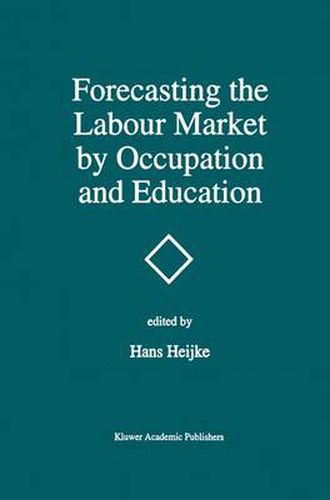Readings Newsletter
Become a Readings Member to make your shopping experience even easier.
Sign in or sign up for free!
You’re not far away from qualifying for FREE standard shipping within Australia
You’ve qualified for FREE standard shipping within Australia
The cart is loading…






This title is printed to order. This book may have been self-published. If so, we cannot guarantee the quality of the content. In the main most books will have gone through the editing process however some may not. We therefore suggest that you be aware of this before ordering this book. If in doubt check either the author or publisher’s details as we are unable to accept any returns unless they are faulty. Please contact us if you have any questions.
Labour markets are differentiated by occupation and types of training, and these submarkets are seldom in equilibrium. This disequilibrium – shortages and surpluses in labour markets – is often attributed to a lack of flexibility in wage structures, the limited possibility for substitution between submarkets, and the high adjustment costs. In addition, market changes are difficult to foresee, thus making it equally difficult to respond appropriately.
This book contains the results of research from three major European institutes – the Research Centre for Education and the Labor Market (ROA) at the University of Limburg in the Netherlands, the Institute for Employment Research (IER) at the University of Warwick in the U.K., and Institut fur Arbeitsmarkt- und Berufsforschung (IAB) at the Bundesanstalt fur Arbeit in Germany – looking at how each institute conducts labour market forecasts by education and type of training. The common element of these institutes is their use of the manpower requirements method. The book is grouped into three parts – Models and Methods, Forecasts, and Reflections – with each institute presenting its results in each section.
$9.00 standard shipping within Australia
FREE standard shipping within Australia for orders over $100.00
Express & International shipping calculated at checkout
This title is printed to order. This book may have been self-published. If so, we cannot guarantee the quality of the content. In the main most books will have gone through the editing process however some may not. We therefore suggest that you be aware of this before ordering this book. If in doubt check either the author or publisher’s details as we are unable to accept any returns unless they are faulty. Please contact us if you have any questions.
Labour markets are differentiated by occupation and types of training, and these submarkets are seldom in equilibrium. This disequilibrium – shortages and surpluses in labour markets – is often attributed to a lack of flexibility in wage structures, the limited possibility for substitution between submarkets, and the high adjustment costs. In addition, market changes are difficult to foresee, thus making it equally difficult to respond appropriately.
This book contains the results of research from three major European institutes – the Research Centre for Education and the Labor Market (ROA) at the University of Limburg in the Netherlands, the Institute for Employment Research (IER) at the University of Warwick in the U.K., and Institut fur Arbeitsmarkt- und Berufsforschung (IAB) at the Bundesanstalt fur Arbeit in Germany – looking at how each institute conducts labour market forecasts by education and type of training. The common element of these institutes is their use of the manpower requirements method. The book is grouped into three parts – Models and Methods, Forecasts, and Reflections – with each institute presenting its results in each section.